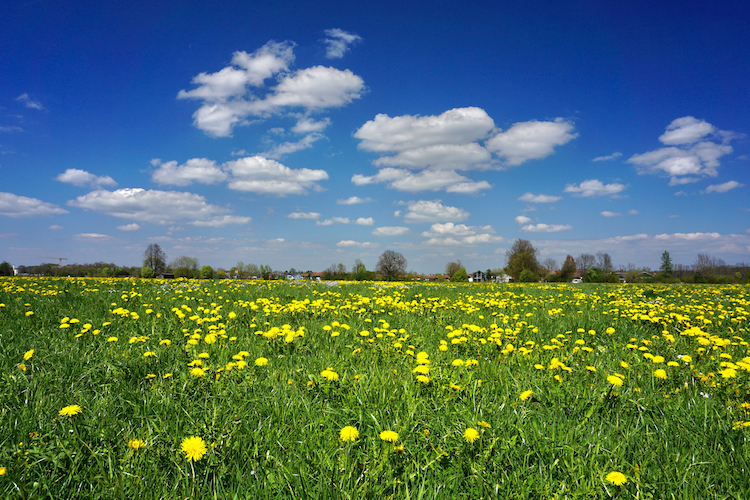
I know they are a weed, but I still think dandelions are pretty. They are one of the first splashes of color that pops up across the landscape each spring, and their scent reminds me of gathering dandelion bouquets as a child.
Still, many of us try to control dandelions in our yards, because if you don’t, they can multiply into a sea of yellow very quickly. The same can happen with weeds in farm fields, but an infestation among a growing crop is more than just an aesthetic problem.
During a Michigan State University Extension “Virtual Breakfast” webinar, assistant professor and weed science extension specialist Erin Burns explained that weeds impact yield because they compete with crops for light, water, and nutrients.
How do we avoid yield losses caused by weeds? Burns said that weed control really has two phases. The short-range goal is to manage weeds this year. The long-range goal is to deplete the weed seedbank.
Weeds grow slow initially, Burns noted, but once warmer weather arrives, they go into rapid growth mode. The best way to manage weeds so they do not impact yield is to control them early. “Timing is everything!” she emphasized.
Data from 34 site years looking at fields across the Midwest showed that when weeds are controlled by the time they are two inches tall, yields can still match fields that had weed control from the start. Once weeds reach four inches in height, crop yields start to drop. When weeds grew to twelve inches tall before they were removed, the crop yield averaged just 78% of what it could have been with weed control from the beginning.
If the target is to maintain 100% yield potential, Burns said to control weeds by the time they are two inches tall. This can be difficult, she noted, if we face snowy, rainy, or windy conditions early in the growing season. However, weeds can grow quickly — on average, 2 to 4 inches per week — so it doesn’t take long for them to get out of hand.
Besides losses from yield reductions, weeds can also cost money by taking in nutrients from fertilizer intended for the growing crop.
“If we delay or have poor weed control, it increases the potential that weeds compete for and limit nitrogen availability for crops,” Burns said. “If you’re thinking about reducing weed control, keep in mind the hidden cost of weed competition for nitrogen.”
When looking to the future, Burns reminded that just a few weeds in a field can leave a lasting impression, and not in a good way. A weed like waterhemp has 1,000,000 seeds per plant, and those seeds can remain in the soil for 4 years. For something like common lambsquarters, one plant can produce 500,000 seeds, and the seeds last 39 years.
With numbers like that, one plant can have a big impact on a crop field. Burns shared an analogy that a weed seed bank is like the opposite of a savings account. Rather than investing into the bank, we want to maximize withdrawals by taking out as much as we can and limit what goes into the seed bank. She said to maintain a history of weed control in that field and keep track of successes and failures to help create a comprehensive weed management plan.

The author is the senior associate editor and covers animal health, dairy housing and equipment, and nutrient management. She grew up on a dairy farm near Plymouth, Wis., and previously served as a University of Wisconsin agricultural extension agent. She received a master’s degree from North Carolina State University and a bachelor’s from the University of Wisconsin-Madison.








